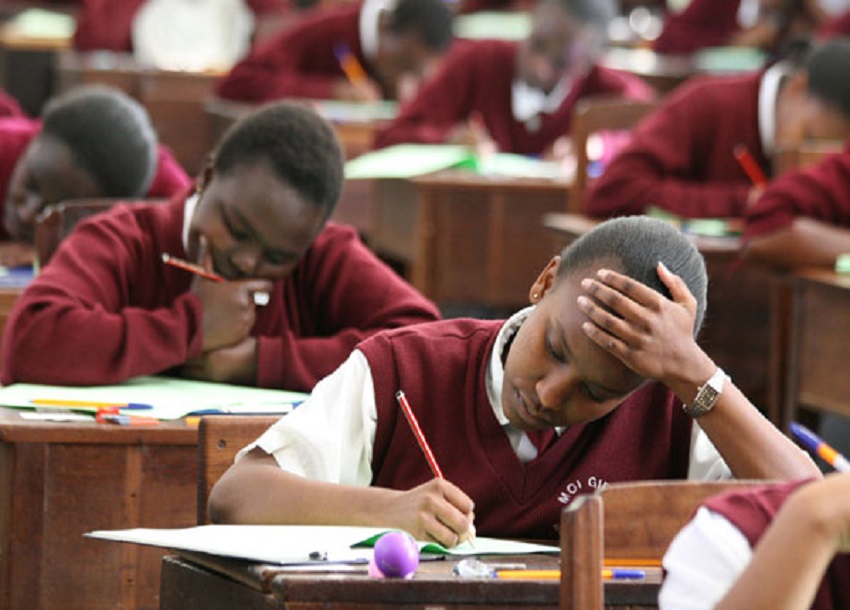By Victor Ochieng’
In the recent past, I taught English Language and Literature in a private school in Nairobi. During that time, I also ventured into the brilliant project of magazine production.
Fortunately, when I shared the brilliant thought with the school arrowheads, they quickly obliged and gave me the green light.
I realized that I needed to form a formidable team of energetic and enthusiastic editors. I braced up myself to be the Editor-in-Chief of Eagles Magazine and looped in two serious scribes, Michael Masinde and Jackson Makula, to give me a hand in the project.
I relied on joint efforts because I had read in a heroic book by Dr. John C. Maxwell that for the dream to work, there must be teamwork. TEAM is an acronym for Together Everyone Achieves More.
Producing Eagles Magazine put us on the epic peak of the mountain of possibility. It is as a result of the project that I felt I should write to schools to give room to provenance of such projects.
I am cock-sure several schools have been producing magazines. Albeit, some initiate it but remain stuck in the mud of procrastination.
Consequently, when I asked a certain scribe to describe the quality of content and form of a school magazine, he posited that the document should dedicate 70% of its space to scintillating stories and 30% to pictorials with high levels of resolution.
Moreover, magazines should accept contributions from all stakeholders: head honchos, staff, students, parents and alumni to enhance a strong sense of belonging.
Using my own lenses, I see reading and writing as close cognates. Reading is breathing in, while writing is breathing out. Teachers should focus on pragmatic ways of making students become avid readers and better writers.
Ideally, schools should take magazines seriously and use them to hit several birds with a single stone. It should spawn in the Department of Languages – teachers of English and Kiswahili.
The teaching of a language should transcend four walls of classrooms. Language teachers should explore admirable ways of honing the four major skills: listening, reading, speaking and writing. If this isn’t done, learners will just be replete with theoretical knowledge without core-competencies in reference to good grammar and its usage.
Teachers of any language should not enjoy bragging rights when their students scoop good grades like A’s yet they have not mastered reading and writing.
Using my own lenses, I see reading and writing as close cognates. Reading is breathing in, while writing is breathing out. Teachers should focus on pragmatic ways of making students become avid readers and better writers.
Furthermore, we can introduce learners to extensive reading and intensive writing through KISS: Keeping It Simple and Smart. It is easier to read puny but pithy pieces penned in magazines. Learners should savour scintillating stories presented in pictorial forms. Those who have studied Children’s Literature know that young ones are picture-smart.
Teachers can use school magazines to cultivate a rich reading culture in learners. Preceptors can use magazines to create the ravenous desire for the written word in learners.
Before magazine production, teachers of languages should implore students to contribute creative works, which should include essays, poetry, short stories, jokes and puzzles. It should be a stiff competition, where meritorious pieces invite coveted prizes. This is the only way schools can raise putative writers who will publish best books or bag big writing prizes like Commonwealth Prize and Nobel Prize.
In addition, institutions can use magazines to enhance their corporate image and build brands with brilliance. Magazines sell schools in umpteen ways. People, who access magazines out there, fall in love with the school if its image captivates the mind. Schools can use magazines to entice potential clients. For it is sagely said, people engage in business with people they know, trust and love.
Consequently, we should never forget that good guests who want to know more about institutions get fantastic facts from the school brochures, prospectus and magazines. Over and above, schools that venture into magazine production use them to generate comely income. They sell magazines in key events like Academic Clinics, Prize Giving Days, Annual General Meetings and Prayer Days.
Finally, during production, magazine managers raise handsome income by attracting companies to advertise on some tracts of the magazines.
The writer is an editor, orator and author.
vochieng.90@gmail.com. 0704420232






